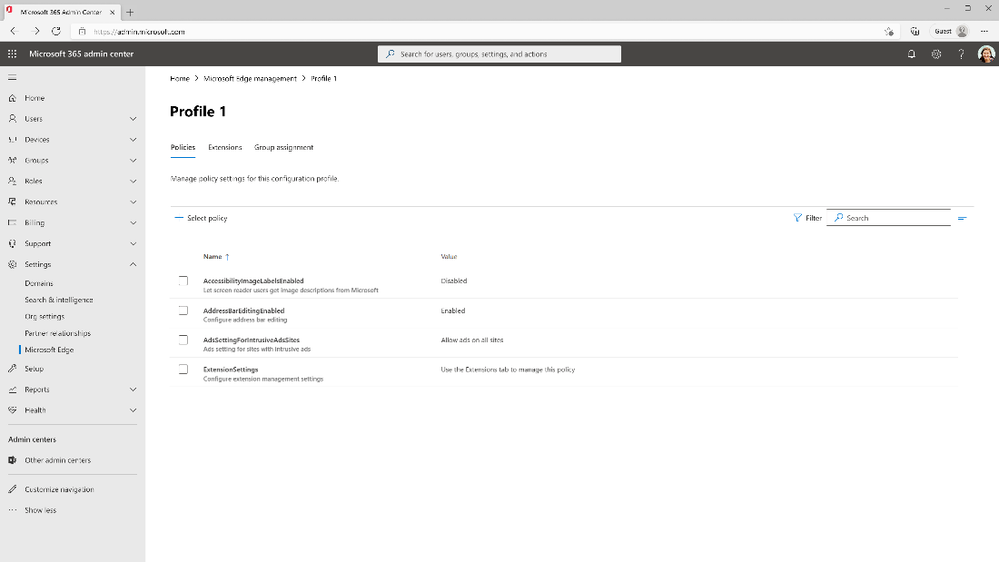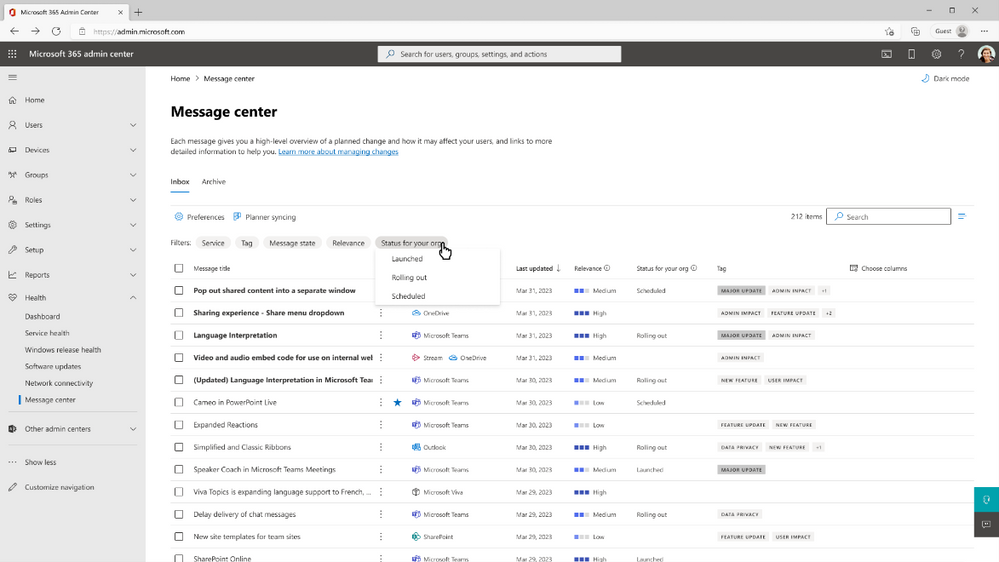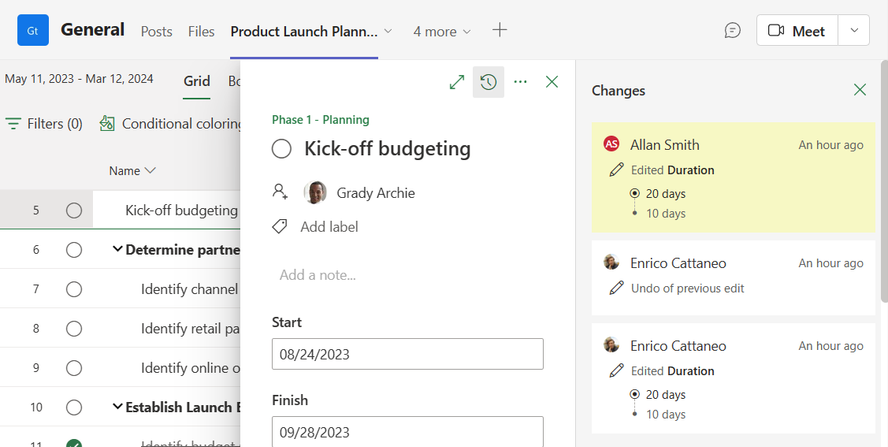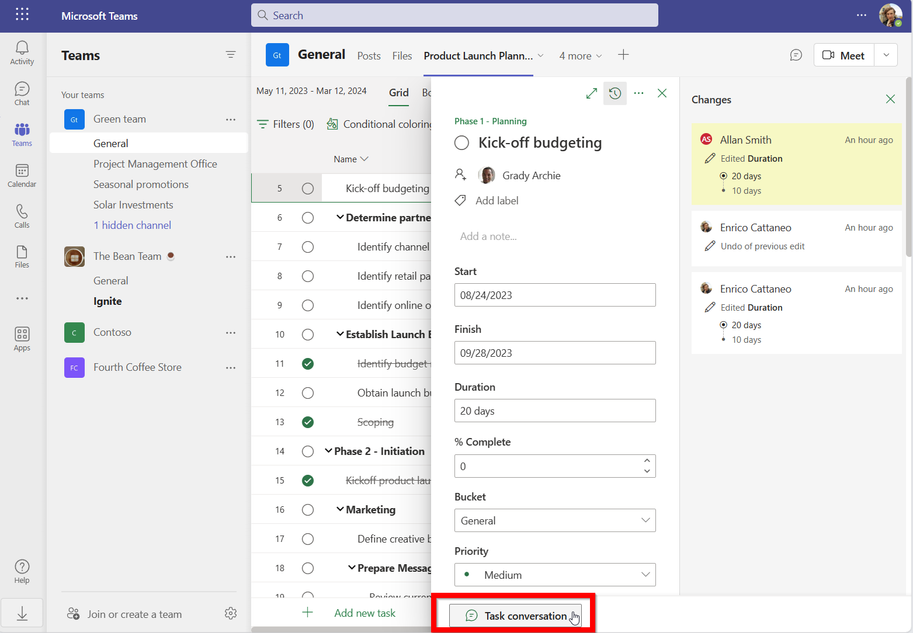by Contributed | Aug 2, 2023 | Technology
This article is contributed. See the original author and article here.
Today Data Exposed went live at 9AM PT for a special Ask Me Anything and news update. If you missed the episode, you can find them all at https://aka.ms/AzureSQLYT. This month we’ll recap all the updates from May through July. This was a fun and informative episode, and we had great guests (and fun) with the product group and our MVP community.
By the way, if you want to see a summary of all the updates in 2022, check out the blog https://aka.ms/NewsUpdate2022. If you want a summary of all the updates in 2023’s first quarter, https://aka.ms/newsupdate2023q1, or from April.
You can read this blog to get all the updates and references mentioned in the show. Here’s the August 2023 update:
In May, we released a short episode on all the updates at Microsoft Build. It’s a great one to see what landed and some awesome demos from the team. Many of the updates in this blog for Azure SQL Database started at Microsoft Build.
So let’s start with Azure SQL Database. We released Elastic Pools for Hyperscale as public preview at Microsoft Build. On the show, we talked more about what Elastic Pools for Hyperscale means and how to get started. Serverless for Hyperscale (preview) also now supports zone redundancy.
XML compression became Generally Available (GA) in SQL DB and SQL MI, which provides a method to compress off-row XML data for both XML columns and indexes, improving capacity requirements.
In the security space, Always Encrypted with Intel SGX enclaves in Azure SQL Database with up to 40 vCores was released in public preview on the DC-series hardware. Yes, a lot to unpack there, but basically we’re enabling you to take advantage of more cores and Always Encrypted together, more details here.
For developers, we released things for Azure SQL Database, but many of those updates apply to SQL Server as well. These developer focused updates include Azure Functions SQL Bindings GA, go-sqlcmd GA, Data API Builder public preview, new JSON type and JSON aggregates preview.
On the tooling and experiences front, since our last episode we released updates to Azure Data Studio.! In May, we added support for GitHub Copilot in Azure Data Studio, GA-ed the SQL Database Projects extension, and improved connectivity (release blog here). In July, we added more connection improvements, Object Explorer functionality, addressed your feedback and more (release notes here). Go-sqlcmd, a tool you should probably go try out now, added more enhancements to connectivity, querying, and setting up your environment.
For Migrations, we released a new SQL Migration journey planning experience and offline migrations to Azure SQL Database in Azure Data Studio. We also have been releasing several things in the migrating from Oracle space – Database Migration Assessment for Oracle extension GA in Azure Data Studio, Database Migration Service Pack for Oracle in preview, Database Schema Conversion Toolkit for Oracle GA in Azure Data Studio, and the Data Migration for Oracle extension preview in Azure Data Studio. So the summary is if you are trying to migrate from Oracle to Azure SQL, we got your back and are here to help, just get the extensions in Azure Data Studio!
For Azure SQL Managed Instance, one big announcement was the public preview of blockchain capabilities with Ledger in Azure SQL Managed Instance. This is available in Azure SQL Database and so it’s exciting to see that parity land in Azure SQL Managed Instance. We also recently added updates to SSDT including support for Ledger. Additionally, the team added some great options including all subscription types in large Azure regions are available for SQL MI, license-free Geo-DR through passive standby replica (GA), higher CPU vCores available for Premium Hardware on BC tier, and export capability for Data Virtualization in SQL MI (GA).
SQL Server on Azure Virtual Machines is powered by the SQL IaaS Agent extension, which enables you to get a lot of benefits for managing your SQL Server Azure VMs with ease. Pam Lahoud came on and told us about the preview of Microsoft Azure Boost (https://aka.ms/AzureBoost). Microsoft Azure Boost is the infrastructure technology behind the improved I/O performance on Ebdsv5 (#DoubleSprinklesVMs). There are many different components that improve overall price-performance, but one of the key aspects for SQL Server customers is that Azure Boost enables Azure current customers to achieve an industry leading remote storage throughput and IOPS performance of 10 GBps and 400K IOPS with our memory optimized E112ibsv5 VM using NVMe-enabled Premium SSD v2 or Ultra Disk options.
For Hybrid, we released several things related to deployment of Azure Arc including: at scale deployment of Best Practices Assessments using Azure policy, simplified deployment of Arc SQL Server extension for software assurance (SA) customers, easily subscribe to Extended Security updates. On the management side, we added basic license management of SQL Servers and host properties, connecting SQL Servers to Arc at scale with flexible host configuration, support for Microsoft update to patch Arc-enabled SQL Server for critical patches, improved control of built-in automated backups and retention periods, as well as support for Azure Purview for Arc-enabled SQL Servers.
Last but certainly not least, we got an update on SQL Server on Linux and containers, which we don’t talk about enough on the show. We got some guidance for deploying on Kubernetes, and the assessment API (which you’ve heard about in the SQL VM and Hybrid space) is integrated with Red Hat Insights. Also, the Ansible SQL Server system role developer version and fully supported “microsoft.sql.server” part of RHEL 8 appstream is now available. SQL Server cross-platform availability groups, which include heterogeneous replicas with complete high-availability and disaster recovery support, is available with DH2i DxEnterprise. And the Azure Marketplace image for SQL Server 2022 for all distributions is available including RHEL 8 HA, Ubuntu Pro, SLES 15, plus RHEL 9 and Ubuntu 22.04 are coming soon.
Videos
We continued to release new and exciting episodes. Here is the list of what we released since the last News Update, or you can just see the playlist we created with all the episodes!
- Query Store: How It Started…How It’s Going
- [MVP Edition]: Making the Most of Clustered Columnstore Indexes in SQL Server 2022 & Azure SQL
- [SQL Insider Series]: Microsoft Fabric (Analytics in the Era of AI)
- Overview of Azure SQL trigger for Azure Functions
- How to achieve data virtualization on Mainframes
- SQL Integration with Microsoft Fabric
- [MVP Edition]: Quickly creating containers with the new, open-source SQLCMD
- How do you use JSON data in Azure SQL Database & SQL Server 2022
- Calling a REST service from Azure SQL DB
- New benefits of Azure Arc Enabled SQL Server
- Build 2023: What’s new in Azure SQL
- [MVP Edition] Easy APIs with Azure SQL Database
- Ledger in Azure Managed Instance
- What’s new in SQL Server Data Tools (SSDT)
We’ve also had some great Data Exposed Live sessions this year. Subscribe to our YouTube channel to see them all and get notified when we stream.
Events
If you are looking to attend some in-person and virtual events this month, the Azure Data team has you covered. We’ll be at the following events and are looking forward to seeing you there!
Multiple Dates: Data Saturdays and SQL Saturdays: Multiple events from around the globe from the Community and from RedGate
Multiple Dates: Microsoft, Partner, and Community-led Events: Events from around the world, presented by Microsoft, Microsoft Partners, and Community groups
September 11-13: SQL Koferenze: SQL Server Workshop, Keynotes, Multiple Sessions on Data, Fabric, and AI
September 8: Data: Scotland: Free event with multiple Sessions
September 27: Future Driven Summit: Data & AI, Azure DevOps, DataOps, Power BI, integration and automation, and cloud infrastructure
November 12-17: Live! 360: Microsoft Fabric Workshop, Keynotes, Multiple Sessions on Data, Fabric, and AI
November 14-17: PASS Summit: SQL Server Workshop, Keynotes, Multiple Sessions on Data, Fabric, and AI
Special highlight on PASS Data Community Summit! Steve Jones came on the show to tell us all about what’s happening at PASS Data Community Summit, including 150+ industry leading sessions from 130+ speakers, networking opportunities, on-demand sessions, and staying ahead with cutting-edge trends. There will be learning opportunities for professionals at all stages of their careers. You can register now at www.passdatacommunitysummit.com with code DATAEXPLIVE150 to claim $150 off a 3-day pass. You know that Data Exposed will be there live and in person, so we’d love to see you there!
Blogs to follow
There are a lot of blogs that I follow to stay up to date. If you want more details than I give here, I recommend checking out:
Until next time…
That’s it for now! Be sure to check back next month for the latest updates. We also release new episodes of Data Exposed on Thursdays at 9AM PT and new #MVPTuesday episodes on the last Tuesday of every month at 9AM PT at aka.ms/DataExposedyt.
Having trouble keeping up? Be sure to follow us on X to get the latest updates on everything, @AzureSQL.
We hope to see you next time, on Data Exposed :)
–Anna and Marisa
by Contributed | Aug 1, 2023 | Technology
This article is contributed. See the original author and article here.
Rolling out in preview, there’s now limited support for labels configured for user-defined permissions. This encryption configuration refers to the setting Let users assign permissions when they apply the label and the checkbox In Word, PowerPoint, and Excel, prompt users to specify permissions is selected:
When a document is labeled with user-defined permissions and uploaded to SharePoint or OneDrive, these services can now process the document so that it can be opened and edited in Office for the web, the label name is displayed in the Sensitivity column, and the encrypted file is returned in search results for the label ID.
Labels with this configuration are now displayed in Office for the web. However, currently, users can’t apply these labels in Office for the web and if these labels are selected, users see a message instructing them to apply the label using a desktop app.
The contents currently can’t be inspected for search, data loss prevention, or eDiscovery.
To support AutoSave and co-authoring for these encrypted files using a desktop app, you must have enabled co-authoring for files encrypted with sensitivity labels and for your Microsoft 365 Apps for enterprise:
- Windows: Minimum version of 16.0.16327 from Current Channel (Preview), or minimal version of 16.0.16414 from the Beta Channel
- macOS: Minimum version of 16.51 from Current Channel (Preview) or from the Beta Channel
Note: If you use earlier versions and co-authoring is enabled for your tenant, AutoSave and co-authoring will be temporarily disabled for documents after users apply a sensitivity label that’s configured with user-defined permissions, or users change the permissions. After they close the document and wait 10 minutes, these features are available again.
Demo
Thanks for reading!

by Contributed | Jul 31, 2023 | Technology
This article is contributed. See the original author and article here.
 a banner depicting the title of the blog with tagline ”Your monthly IT admin blog for all things Microsoft 365”
a banner depicting the title of the blog with tagline ”Your monthly IT admin blog for all things Microsoft 365”
Welcome to the Microsoft 365 IT admin blog, your monthly source of tips, insights, and best practices for managing and optimizing your Microsoft 365 environment. In this edition, get ready for the next AMA on Microsoft 365 Copilot, learn about Bing Chat Enterprise, and the latest enhancements to the Microsoft 365 admin center. Read on to catch up about all things Microsoft 365 administration.
Join the next AMA on Microsoft 365 Copilot
We’ll be hosting the next AMA (Ask Me Anything) focused on Microsoft 365 Copilot and Bing Chat Enterprise on August 10 in the Microsoft 365 Copilot Tech Community. The event was a great opportunity to hear from members like you and have the team of experts answer questions. You can start sending in your questions to the event page now, and a team of experts will join us to help answer them during the event. The first AMA was held on July 13, and focused on preparing for Microsoft 365 Copilot. If you missed it, you can review the full list of questions and answers here.
Bing Chat Enterprise now in preview
At Microsoft Inspire, Microsoft announced Bing Chat Enterprise, giving organizations AI-powered chat for work with commercial data protection. Chat data is not saved, Microsoft has no eyes-on access, and your data is not used to train foundation models. This gives users access to better answers, greater efficiency, and new ways to be creative while staying secure. Users can access Bing Chat Enterprise using their work account wherever Bing Chat is supported – Bing.com/chat and Microsoft Edge sidebar.
To enable the preview, eligible customers can turn on Bing Chat Enterprise by going to https://aka.ms/TurnOnBCE to opt in. You will also need to ensure Microsoft Search in Bing setting in the Microsoft 365 admin center is turned on. Learn more about managing Bing Chat Enterprise here.
Have questions about Bing Chat Enterprise? Check out the FAQ here.
Highlights across Microsoft 365 administration
Let’s check out some of the latest features we launched in the Microsoft 365 admin center and how they can help you get things done.
Learn about Microsoft 365 Backup and Archive
Microsoft also announced many new AI capabilities across Microsoft 365 at Inspire. Particularly for Microsoft 365 admins, Microsoft 365 Backup was introduced to help you back up and quickly restore your organization’s data to a prior point-in-time after a catastrophic event or unforeseen data loss. Microsoft 365 Archive offers long-term storage of inactive or aging files that you might still want to maintain for compliance or retention requirements. You can also catch up on details on Microsoft 365 Copilot licensing and availability announced during the opening keynote.
Simplify controls with the Microsoft Edge manager service
Following our announcement in May, The Microsoft Edge management service is now generally available (Roadmap ID 123856). You can access the service through the Microsoft 365 admin center, Org settings > Microsoft Edge to configure Microsoft Edge browser settings for your organization and apply these settings by group assignment or group policy. Through the portal, you can also manage browser extensions and policies or view user requests for browser extensions. To learn more, read about the Microsoft Edge management service.
 An image of the Microsoft Edge management service portal
An image of the Microsoft Edge management service portal
Improve employee experience with Viva Pulse
Last week, Microsoft announced the general availability of Microsoft Viva Pulse, a new employee feedback experience that is now available for use with your Viva Suite subscription. It empowers managers and project team leaders to request and receive feedback from their teams at any time. Managers and project leads can choose from research-based templates to quickly create a survey and send it to select individuals or groups. They can also track feedback to understand team sentiment over time and show teams they’re being heard by working together to take clear steps to address needs.
As an admin, you must execute a script in PowerShell for these notifications to appear. After the script is executed successfully, users will receive email notifications when a feedback author requests a Pulse, when feedback providers are reminded to respond, when a feedback author is notified their Pulse request has closed, and when a feedback author shares a Pulse report. Find the script to enable notifications for your organization here.
Better plan for change with Feature release status in the message center
In continued efforts to make it easier for IT departments to manage change with greater predictability, Microsoft recently made feature release status in the message center for Teams, and Outlook on the web, and Microsoft 365 admin center available worldwide to customers. Now, you can have visibility to feature rollout status in the message center, Planner sync for the message center, and Service Communications API, along with the ability to view release status in Targeted and Standard release rings. Additionally, on the message center, you can apply filters based on the status of the releases and the timeframe of their status changes. To learn more, you can read the documentation here.
 An image of the feature release status column in the message center
An image of the feature release status column in the message center
Stay updated
As always, stay current with the latest updates Microsoft 365 admin center from the Microsoft 365 roadmap and the message center. In addition, we also highlight new feature releases and enhancements released each month in our What’s new in the Microsoft 365 admin center article.
Comment below if there are IT admin or change management topics you would like us to explore in the future!

by Contributed | Jul 31, 2023 | Business, Microsoft 365, Microsoft Stream, Microsoft Viva Engage, OneDrive, Technology
This article is contributed. See the original author and article here.
With Clipchamp as part of Microsoft 365, it’s easy to know where to turn to make videos and get started. Anyone can confidently create and publish videos, using an intuitive interface and harnessing useful tools. Clipchamp empowers anyone to produce high-quality videos they can be proud of.
The post Introducing Microsoft Clipchamp: Unlock the power of video at work appeared first on Microsoft 365 Blog.
Brought to you by Dr. Ware, Microsoft Office 365 Silver Partner, Charleston SC.

by Contributed | Jul 28, 2023 | Technology
This article is contributed. See the original author and article here.
Introduction
The new task history feature in Microsoft Project for the web helps task owners stay on top of their tasks and quickly identify recent progress that has been made or changes that have impacted the schedule. Edits to tasks such as adding or removing labels, changing the duration, or changes to other tasks that affect the schedule of work all appear in the new Changes pane in Task Details. It is rolling out now, and will be available world-wide over the next few days.
Watch this 2-minute demo for a quick overview.
Getting Started
Task history is available to all users in Project for the web who have a Project Plan 3 or greater license.
- First open a project at Project Home or in a Project tab in Microsoft Teams.
- Open task details for any task. It can be reached by clicking the task details in the task grid, or by clicking a task card in the board view.

- In the corner of task details, there is a new task history icon. Click it to open the changes pane.

Details about the recorded changes
All the changes a user makes to a task are recorded in task history. For each edit, details are shown such as who made the change, when they made it, what property was changed, the previous value, and the new value.
Changes that are recorded include edits such as
- Adding or removing labels
- Changing the duration or effort
- Editing checklists
- Adding or removing attachments
- Edits to any custom columns

Changes made to other tasks that impact the selected task
Project for the web makes it easy to track tasks and identify dependencies. Dependencies between tasks means it is crucial for task owners to understand how changes across the project impacts their work. Task history makes it easy to identify these changes and stay on track. Changes made to other tasks that impact either the start date or finish date of the selected task have a history record that shows high-level information about the edit.
In the example shown below, Allan Smith edited the duration of a related task called “Kick-off budgeting.” This edit impacted the start date of the currently selected task.

Navigating to related task edits
Clicking the task title for these changes takes you to the related task and highlights the relevant edit. In this example, clicking the task title of the previously shown change record opens the “Kick-off budgeting” task and highlights the change in duration.
Pressing the browser back button or pressing the back button in Teams returns to the previously selected task.

Pro-tip: use task history with task conversations to stay on track
Task history pairs perfectly with task conversations to enable in-context chat about changes to tasks. For projects that have been pinned in Teams channels, the bottom of the task details pane includes a task conversation button. Pressing it opens the conversation pane.

Chats in this pane automatically include a link to the task to help everyone quickly get to a shared context. More information about task conversations can be found at the Microsoft support page for them.

Frequently Asked Questions
Why don’t I see the task history button?
Task History is only available to users with a Project Plan 3 or greater license. If the icon doesn’t appear in task details, work with your Administrator to verify the license that is assigned to you.
Will edits made by users without a Project Plan 3 license be shown in the Changes pane?
Yes. Edits made by all users, regardless of their license, will appear in the changes pane. Only users with a Project Plan 3 or greater license will be able to open the changes pane to view these edits.
Is task history available in Planner?
No. Task history -along with other powerful features such as custom columns and the timeline view- helps to give teams with more sophisticated project management requirements the tools they need to keep their projects on track. These features can all be found in Project for the web.
Can my team build Power BI reports using Task History data?
Yes. Task history data is stored in Microsoft Dataverse and can be queried using Power BI. Learn more about the schema by visiting our support page.
Do edits to tasks using the Project scheduling APIs appear in task history?
No. Only edits to tasks made using the grid, board, or timeline views appear in the Changes pane.
My team uses Project in Power Apps, do edits made in that context appear in task history?
Edits made in the grid, board, and timeline views appear in Task History. Any edits to tasks using Power Apps forms as well as any edits to columns added to tables in Dataverse are not shown in task history.
My team has customized Project in Power Apps, will task history work in our environment?
Yes, but your administrator needs to ensure that they are validating their customizations with the latest release, including any customization of security roles in Dataverse.


Recent Comments